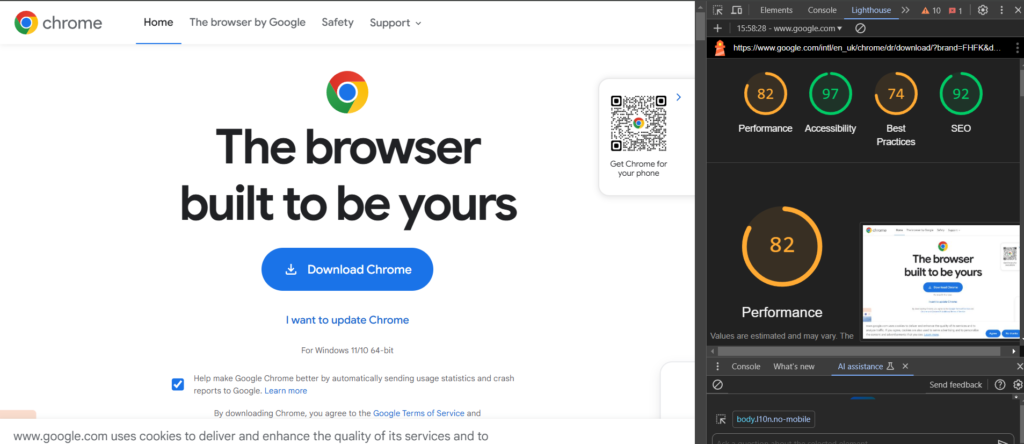Google has announced that it will be ending support for its Universal Analytics platform in June 2023, meaning that those who have not yet made the switch to Google Analytics 4 (GA4) will need to do so soon. While some may be hesitant about the change, GA4 offers a number of benefits, including more data, greater customisation, and the ability to track customer activity across multiple platforms. It also incorporates privacy-first tracking (a move kick-started by GDPR legislation), cross-channel data measurement, and AI-driven predictive analytics to provide unparalleled insights.
GA4 Timeline
Until June 2023
You can still use and collect new traffic data in your existing Universal Analytics GA3 property.
From July 2023
You can access historical data in your Universal Analytics GA3 property for six months.
December 2023
Historical data in Universal Analytics GA3 property will no longer be accessible.
What has changed in GA4?
In addition to tracking activity on both websites and apps, Google Analytics 4 also introduces new metrics, such as engagement rate and engagement time, as well as predictive insights that allow businesses to make data-driven decisions about marketing and advertising strategies. There is a new dashboard with a streamlined interface and predictive insights based on AI.
Privacy is a key focus of GA4, which has been designed with compliance with laws like GDPR and CCPA in mind. With its privacy-first tracking and cross-channel data measurement capabilities, GA4 allows businesses to comprehensively understand their customers without compromising their privacy.
One of the main benefits of GA4 is that it provides more data and is more customizable than Universal Analytics, allowing businesses to track what matters to them rather than relying on Google’s assumptions. Additionally, GA4 uses artificial intelligence (AI) and machine learning to provide more detailed insights into how users interact with websites and apps, making it a powerful tool for understanding customer behaviour.
While there may be a learning curve in transitioning to Google Analytics 4, it ultimately provides more in-depth reports and insights, making it a valuable tool for businesses. And to be honest, if you want to keep using Google for your analytics after July 2023 – you don’t have any choice.
A New Dashboard
There are several key differences between GA4 and Universal Analytics that businesses should be aware of. One of the most noticeable changes is the new dashboard, which is more streamlined and includes predictive insights based on GA4’s AI capabilities.
Events not views
Another significant difference is that all measurements in GA4 are events, rather than page views as in Universal Analytics. This allows businesses to gain a more in-depth understanding of how customers interact with their websites and apps, as well as access to new metrics such as engagement rate and engagement time.
Predictive Insights
Perhaps the most exciting feature of GA4 is its predictive insights, which allow businesses to make data-driven decisions about marketing and advertising strategies. By analyzing past behaviours and using AI to predict future trends, GA4 can help companies to make proactive decisions that will improve their marketing efforts and drive more traffic to their websites.
Overall, while the transition to GA4 may require some adjustment, it is ultimately a valuable tool that provides businesses with more data, greater customization, and advanced insights into customer behaviour.
BENEFITS OF GA4
The Google Analytics 4 (GA4) platform has the ability to track user behaviour across both websites and mobile apps. There are several differences between GA4 and its predecessor, Universal Analytics. GA4’s focuses on tracking the user journey and events that occur during that journey, as well as an emphasis on user engagement through powerful new metrics and dimensions that use AI to predict customer actions. GA4 shows its commitment to privacy, with compliance with laws like GDPR and a focus on addressing issues that were not addressed by Universal Analytics.
User Journey
One of the key features of Google Analytics 4 (GA4) is its focus on tracking a user’s journey and the events that occur during that journey. The new data-driven model of GA4 allows businesses to use a single set of metrics and dimensions to analyze data from both websites and mobile apps. This includes the ability to track users as they move across different platforms, such as visiting a website on their mobile device, returning on a desktop computer, and then taking actions such as downloading, purchasing, or registering through an app. This comprehensive view of the customer journey is a unique feature of GA4 that helps businesses gain a deeper understanding of user behaviour.
User Engagement
Google Analytics 4 (GA4) offers a number of powerful features that help businesses better understand and predict customer behaviour. One of these features is the use of AI to generate new user metrics and dimensions, including categories like acquisition, engagement, monetization, and retention. These metrics provide businesses with a more comprehensive view of their users, allowing them to tailor their marketing and sales efforts more effectively. GA4 also includes an “Audiences” report, where businesses can define specific user segments and create custom definitions to further tailor the platform to their needs. Overall, these features of GA4 provide businesses with valuable insights that can help them make data-driven decisions and improve their marketing and sales efforts.
Simplify Goals & Events
Google Analytics 4 (GA4) includes a range of pre-made actions and events that were previously only available through manual setup on Universal Analytics. These include clicks, scroll behaviour, transactions, file downloads, and user first visits. While form submissions and e-commerce goals may not be automatically set up in GA4, the process of implementing these features has been significantly streamlined, requiring less time and effort than in previous versions of Google Analytics. Overall, GA4 provides businesses with a more comprehensive and user-friendly platform for tracking and analysing user behaviour on their websites and mobile apps.
AI Predictive Metrics
Google Analytics 4 (GA4) includes new predictive metrics that allow businesses to make more informed ‘data-driven’ decisions based on data. These metrics allow businesses to better understand their audiences and create custom segments based on predicted behaviours. This can be useful for targeting ads on Google Ads or social media, as well as for improving retargeting campaigns and website performance. By creating custom funnels based on audience behaviours and needs, businesses can optimize their marketing efforts and improve the overall user experience on their website. Overall, GA4’s predictive metrics provide businesses with valuable insights that can help them make more data-driven decisions and improve their marketing efforts.
You can read more about GA4 on Google’s support website it also has a great migration guide




One Comment
Comments are closed.